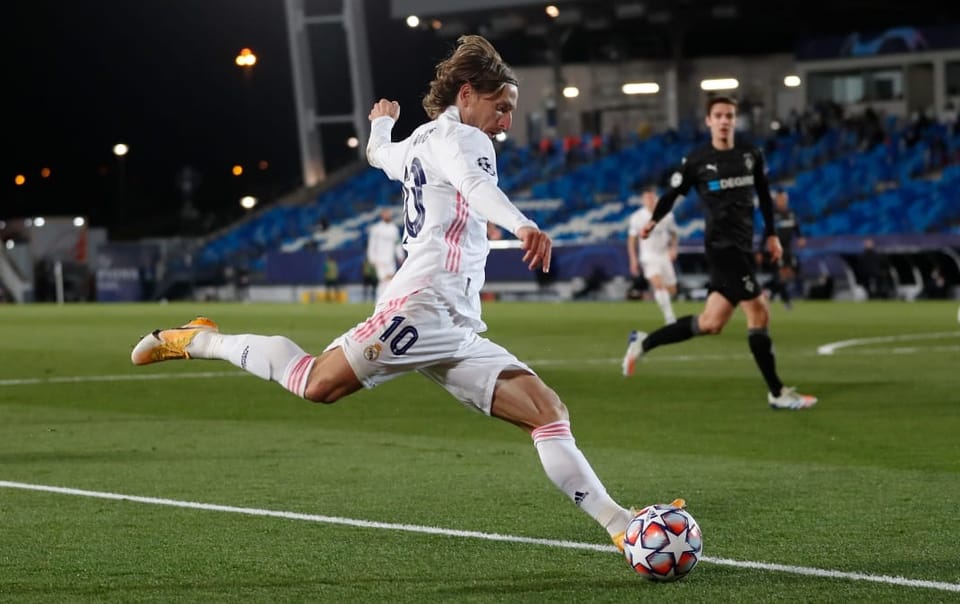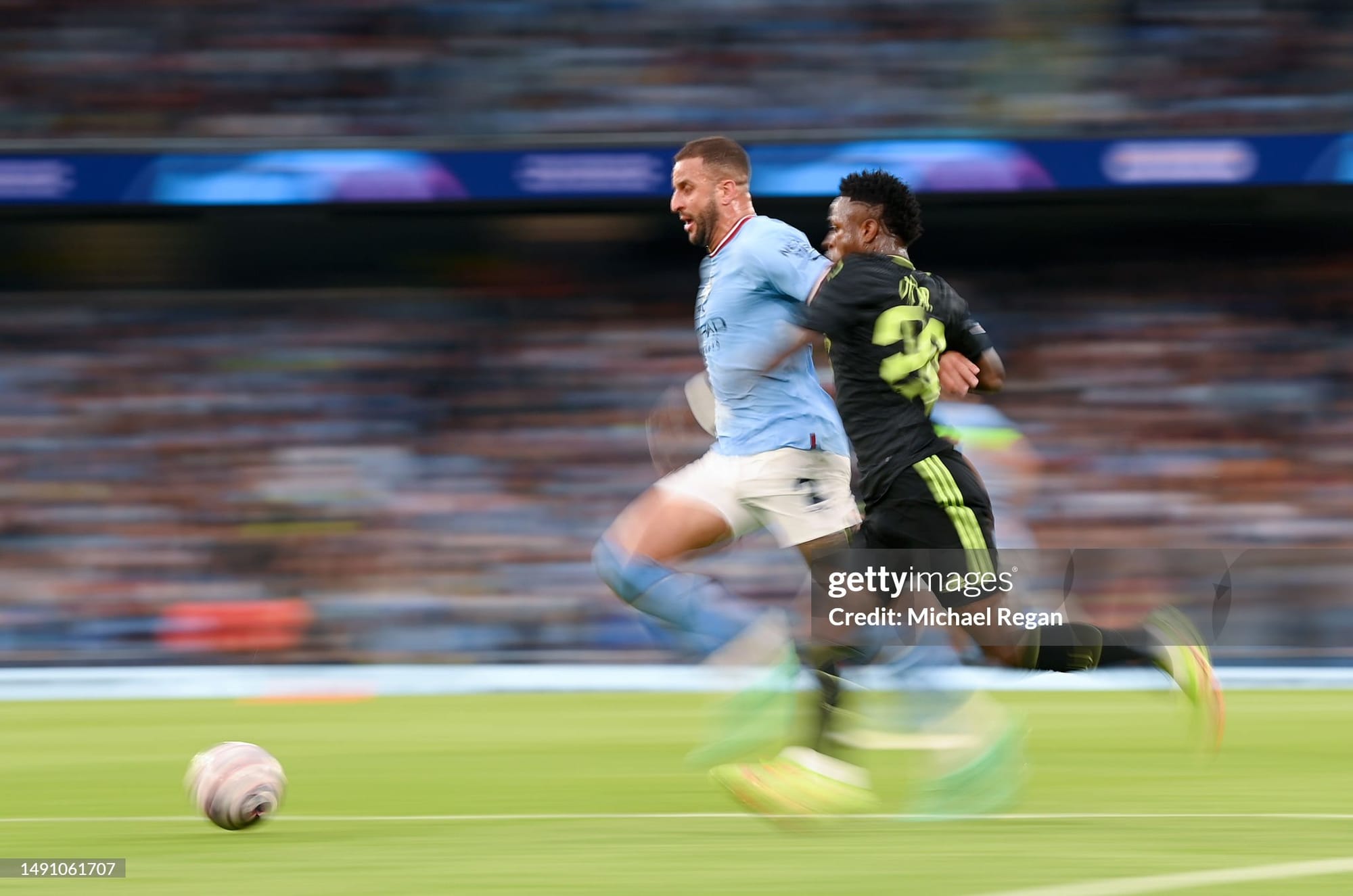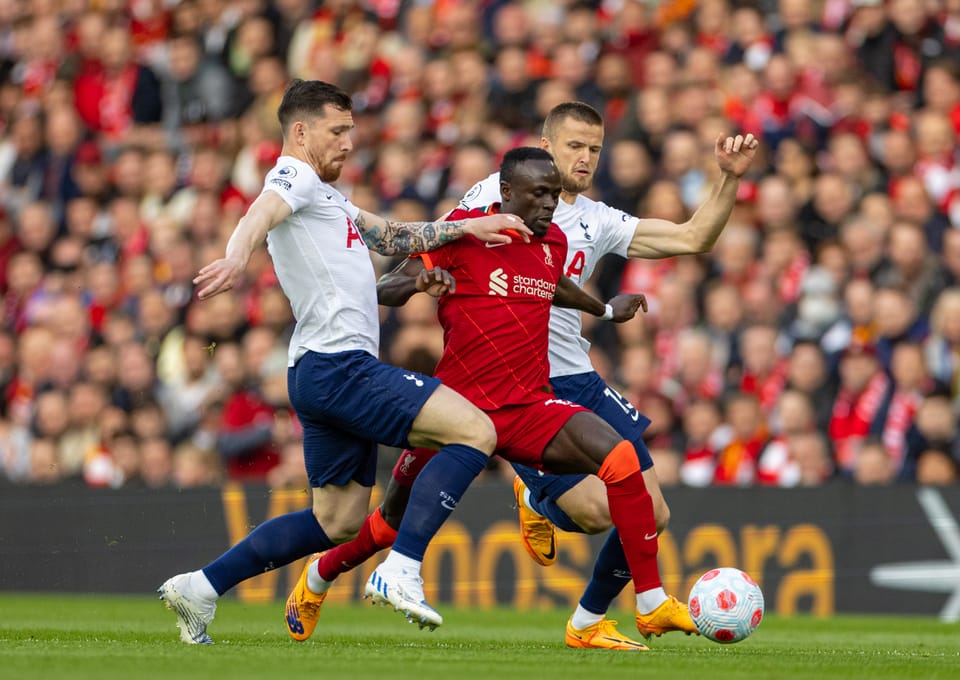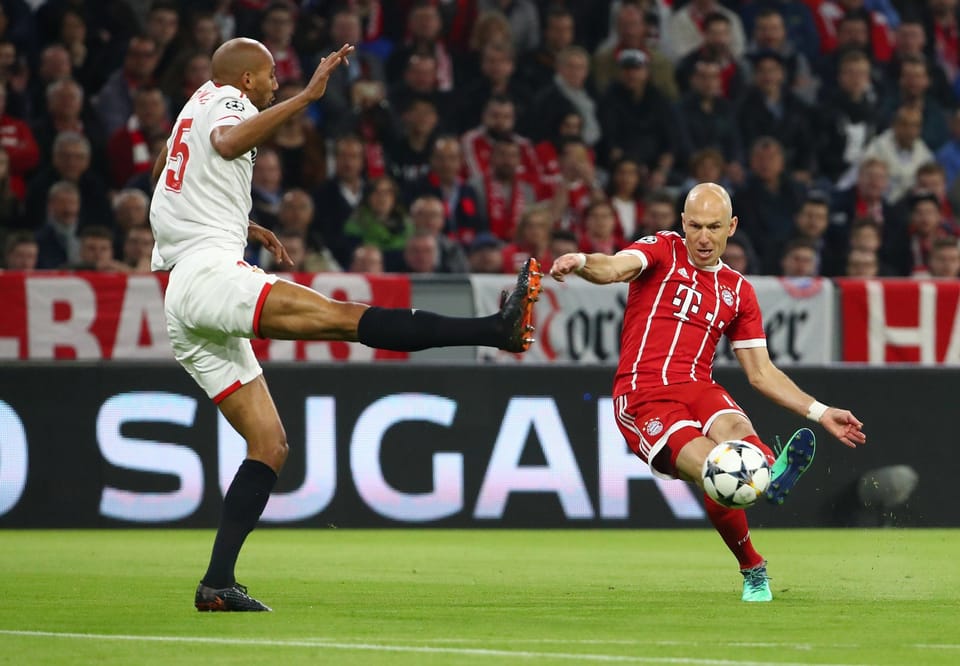Precision Play: The Stiff Arm
This essay examines the stiff arm action and explains why it is a valuable tool for runners or carriers in open-field sports.

You can't escape it.
It chops your flow, comes with an off-setting force, complicates your stride, and occasionally arrives as a slap to the face.
Football. Basketball. Rugby. American football. You name it – as long as it's an open-field ball sport, you'll find it.
The best runners love it. The best tacklers know how to evade it.
Kind readers, our special guest today is the stiff arm.
Welcome to Precision Play, a BallerzBantz series.
This essay will examine the stiff arm action and explain why it is a valuable tool for runners or carriers in open-field sports.
As usual, the archive, if any, will be appended underneath each section.
Because of how large spaces are in open field sports, athletes, owing to their build and various tools, maintain their own circle of control. This is essentially a comfort zone around a player's pivot, within which they best manipulate the ball and charge through the field.
General inferences around build:
- Taller, rangy athletes tend to have a wider circle of control.
- Shorter athletes with have a narrower circle of control.
- Athletes with better balance have a tighter (more authority) circle of control.
- Athletes with worse balance have a looser (less authority) circle of control.
Then, wherever any of these base-builds need compensation, they develop tools and tricks to consolidate.
One of these tools is the stiff arm, which players use it to prevent encroachment and retain command when they run, receive the ball, or dribble it.
"Claim your circle."
"Upset your opponent’s balance."
"Own the space."
"Drive."
Once you see it, it makes sense why certain players are better take-on artist or duelers than others.
Case-Study: Kobbie Mainoo
Yesterday, I woke up to this statistic. Kobbie Mainoo's Manchester United's most reliable dribbler (take-ons) since Paul Pogba.
58% - Kobbie Mainoo 🏴 completed 58% of his attempted dribbles in the Premier League last season; the highest success rate by a Manchester United player in a single campaign since Paul Pogba in 2021-22 (72% - min. 50 attempts). Nifty. #OnesToWatch #EURO2024 pic.twitter.com/A8BCNN4SRh
— OptaJoe (@OptaJoe) June 7, 2024
Now, they both wield rather distinct frames: Paul's 6 foot 4, lankier, and has got longer legs; Kobbie's 6 foot 0, shorter legs. Both have rather compact builds.
One LOUD trait they both have in common, though, is a preference for and consistency with the stiff arm to expand and exert dominance in their circle of control. This, in tandem with their compact builds, means they are able to reliably take on players inside their circle.
Shots of Kobbie using the stiff arm:
Slideshow: click the button to see all the photos! If it doesn't work, it means Getty gave me the wrong code.
Embed from Getty ImagesHow do tacklers contend?
It is practical to consider every duel as one player's circle of control vs another's.
This means that for the players with tight circle of controls, only tacklers who are possess similar or greater girths can reliably compete.
This is one reason why players like Everton's Amadou Onana are especially valuable for teams that are obsessed with dominating all kinds of duels, against all types of tools, against all builds of players.
Sometimes pictures tell the entire story:
- the tussle of hands to find a gap
- shiftiness from either dueler
- Amadou's extraordinary reach to challenge and (attempt to) encroach Kobbie's circle.

What about other sports?
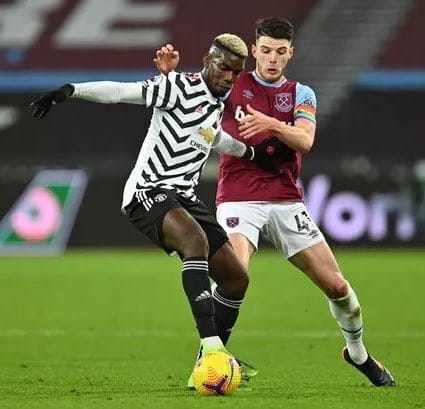
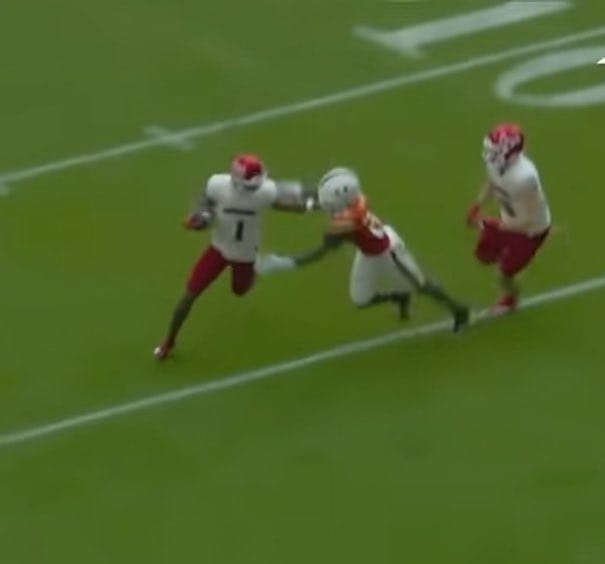
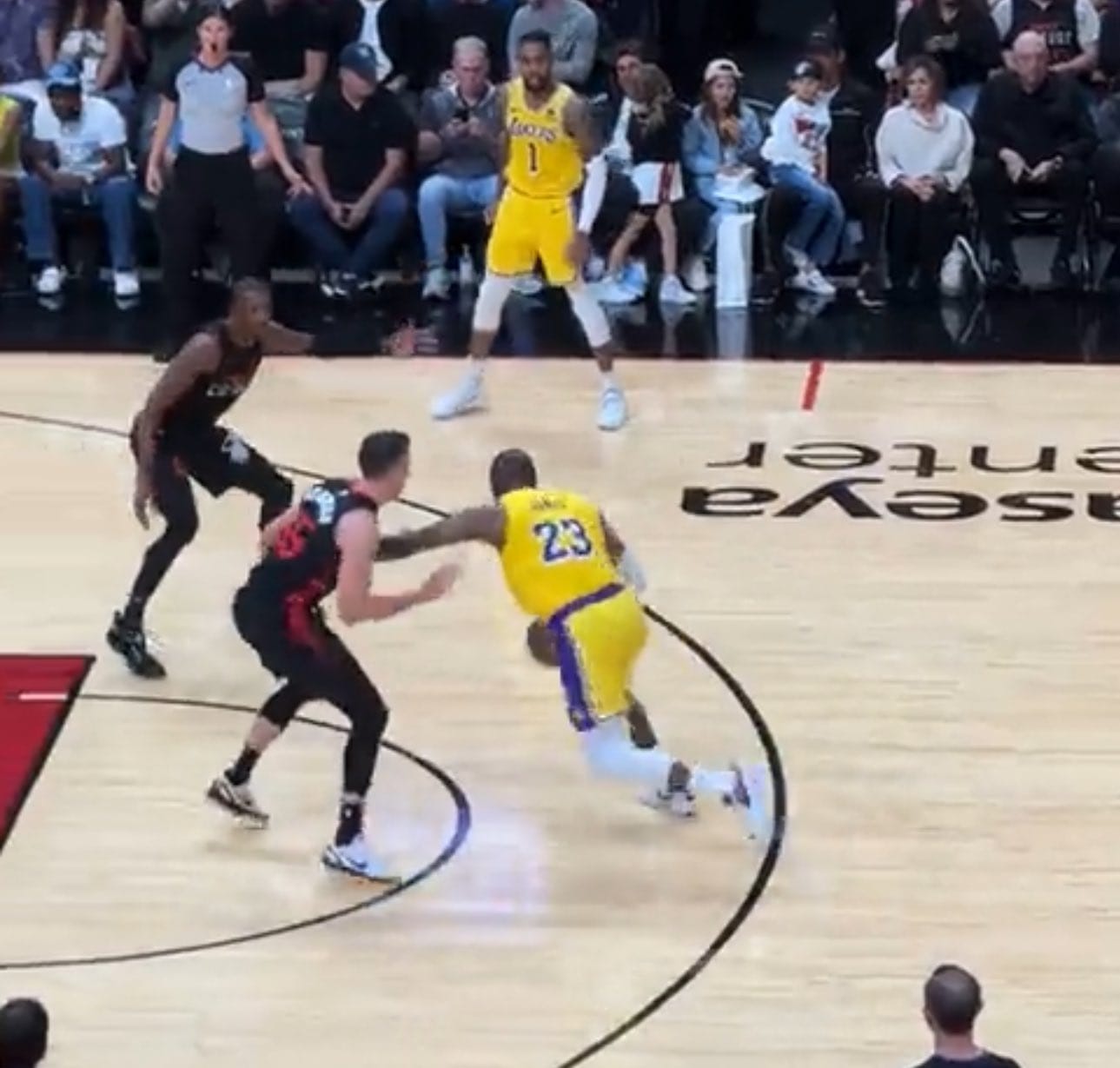
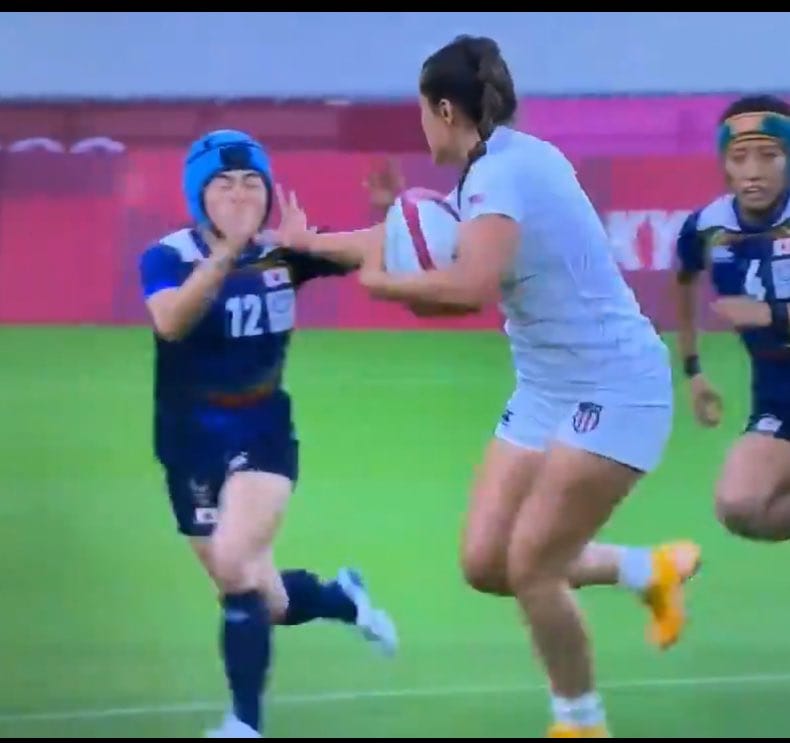
The Stiff Arm in Action
Football
— Joel A. A. (@joeladejola) November 21, 2023
American Football
— Joel A. A. (@joeladejola) November 21, 2023
Basketball
— Joel A. A. (@joeladejola) November 21, 2023
Rugby
— Joel A. A. (@joeladejola) November 21, 2023
Apart from the burst in their stride, powerful ball carriers across open-field ball (⚽️ 🏀 🏈 🏉) sports have another trait in common:
— Joel A. A. (@joeladejola) November 21, 2023
➡️ The stiff arm.
Expand your circle. Upset your opponent’s balance. Own the space. Drive. pic.twitter.com/apKt8QOG7l
Archive from November 20, 2023
Curiosities:
- Tall Order: Tosin Adarabioyo by Sébastian [@SebC__]
- And for sparking some of the aforementioned test-cases.
What Next?
If you enjoyed this, consider subscribing to BallerzBantz, following us on Twitter, and sharing this with someone.
Join us to stay ahead and contribute to this burgeoning community.
Who is the Writer?
Joel A. Adejola is an undergraduate at the University of Kansas (KU), studying Engineering and Philosophy.
